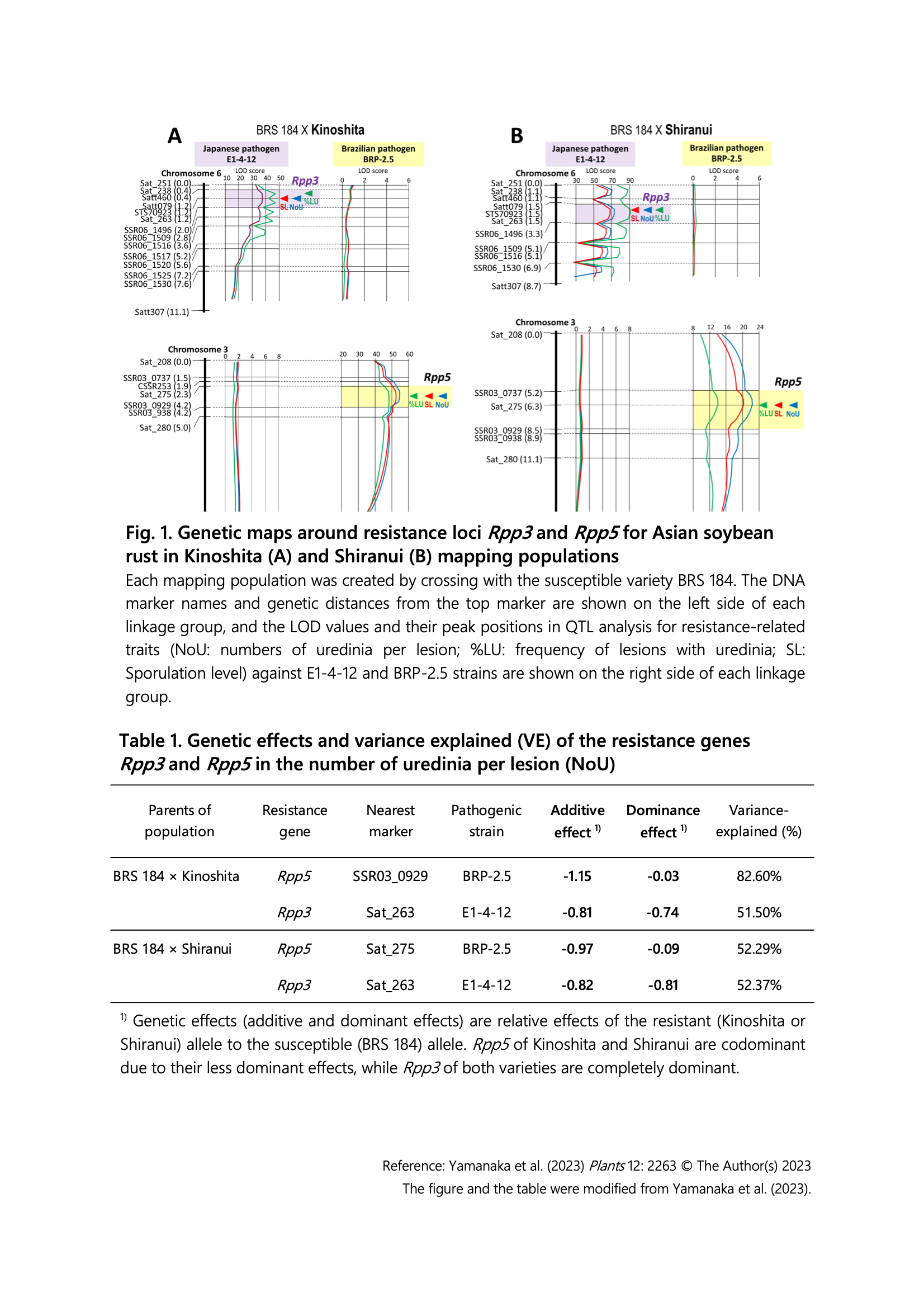Kinoshita and Shiranui, soybean varieties resistant to Asian soybean rust, have a second resistance gene
Description
Asian soybean rust (ASR) is a major soybean disease that causes early yellowing and defoliation of soybean, resulting in reduced yield. This disease is widespread in soybean production areas around the world, especially in tropical and subtropical regions, and is a serious impediment to the stable supply of soybeans to international markets. In recent years, the susceptibility of the ASR pathogen to fungicides has decreased, resulting in increased control costs and environmental impact. Soybean varieties with resistance genes (Rpp) against ASR have since been developed in various regions. The soybean varieties Kinoshita and Shiranui were identified in 2008 as ASR-resistant varieties carrying Rpp5. These two varieties have shown resistance to many soybean rusts in various regions and are widely used in Latin America and Asia as parents for resistance variety development. However, their resistance to a wide range of rusts suggested that both varieties may also possess resistance other than Rpp5. Therefore, this study was conducted to determine the resistance potential of the Kinoshita and Shiranui varieties in order to appropriately and effectively utilize their resistance to a wide range of ASR pathogens in variety development.The resistant varieties Kinoshita and Shiranui were crossed with susceptible varieties to produce F2 populations. Each F2 population was inoculated with the Japanese ASR strain E1-4-12 and the Brazilian strain BRS-2.5, which differ greatly in virulence, and evaluated for ASR resistance-related traits, respectively. QTL analysis of resistance-related traits was performed to identify resistance loci for each pathogen strain. QTL analysis revealed that Kinoshita and Shiranui possess loci Rpp3 and Rpp5, which exhibit resistance to ASR strains E1-4-12 and BRP-2.5, respectively (Fig. 1). The Rpp3 carried by both varieties was resistant only to strain E1-4-12 of the two strains used in this study, and the Rpp5 of both varieties was effective only against strain BRP-2.5. The Rpp5 and Rpp3 of the Kinoshita and Shiranui varieties have similar genetic effects as well as genetic loci, suggesting that the two varieties may have the same or very similar resistance-type alleles in Rpp5 and Rpp3, respectively (Table 1).
Because ASR pathogen in the soybean field is known to be diverse, both Rpp5 and Rpp3 should be introduced when Kinoshita and Shiranui are used for developing varieties with ASR resistance that have the same levels of resistance as Kinoshita and Shiranui. For the two resistance loci Rpp3 and Rpp5, the use of DNA markers flanking and sandwiching the loci allows for effective and efficient selection for resistant plants in breeding for ASR resistance.
Figure, table
- Research project
- Program name
- Term of research
-
FY2017-2023
- Responsible researcher
-
Yamanaka Naoki ( Biological Resources and Post-harvest Division )
MIERUKA ID: 001770Aoyagi Luciano Nobuhiro ( Biological Resources and Post-harvest Division )
- ほか
- Publication, etc.
-
Yamanaka et al. (2023) Plants 12(12): 2263.https://doi.org/10.3390/plants12122263
- Japanese PDF
-
2023_B15_ja.pdf1.13 MB
- English PDF
-
2023_B15_en.pdf887.67 KB
* Affiliation at the time of implementation of the study.

